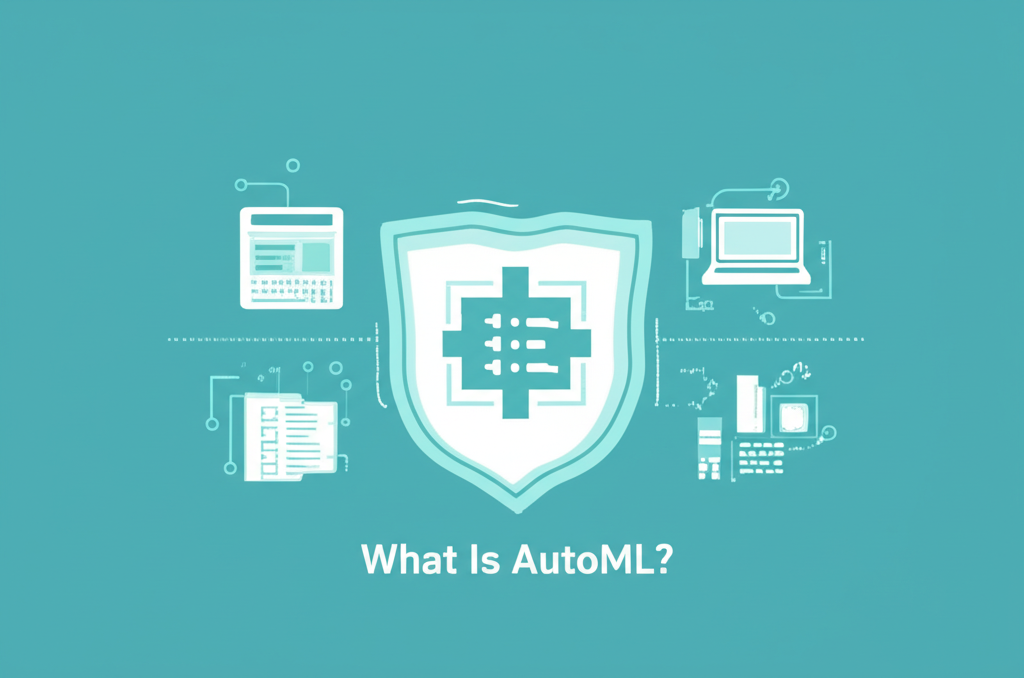AI-Powered Study Mastery: The Ultimate Student’s Guide to Academic Excellence with Artificial Intelligence
Picture this: You’re surrounded by textbooks, highlighters scattered across your desk, and multiple browser tabs open as you frantically try to synthesize information for tomorrow’s exam. Sound familiar? Welcome to the paradox of modern education—unlimited access to information, yet students are more overwhelmed than ever. Recent McKinsey research reveals a startling truth: 87% of students report improved learning outcomes when using AI as a collaborative study partner rather than attempting to process everything manually. The students thriving in today’s academic environment aren’t just working harder; they’re working fundamentally differently.
Table of Contents
- The Academic AI Revolution: Why Traditional Study Methods Are Failing
- The Modern Student’s Dilemma: Information Overload in the Digital Age
- The AI Study Framework: Your Blueprint for Academic Transformation
- Core Strategy #1: The AI Research Accelerator System
- Core Strategy #2: Intelligent Note-Taking and Knowledge Synthesis
- Core Strategy #3: Adaptive Learning and Personalized Study Plans
- Core Strategy #4: AI-Enhanced Writing and Critical Analysis
- Advanced Implementation: Building Your Personal AI Study Ecosystem
- The Complete AI Student Toolkit: Beyond Basic Prompts
- Ethical AI Use: Maintaining Academic Integrity in the AI Era
- Future-Proofing Your Academic Skills: AI Literacy for Tomorrow’s Careers
The Academic AI Revolution: Why Traditional Study Methods Are Failing
They’ve cracked the code on leveraging artificial intelligence not as a shortcut, but as a sophisticated thinking partner that amplifies their natural learning abilities. This isn’t about finding clever ways to avoid studying. It’s about recognizing that the skills needed for academic success are evolving rapidly, and the students who adapt first will have an enormous advantage.
The traditional approach of reading, highlighting, and hoping for the best is like bringing a bicycle to a Formula 1 race. It might get you there eventually, but you’ll be left in the dust by those who’ve embraced better tools. The shift toward comprehensive AI learning strategies represents more than just technological adoption—it’s a fundamental reimagining of how learning happens in the 21st century.

Modern students leverage AI as collaborative study partners, transforming traditional learning approaches
The Modern Student’s Dilemma: Information Overload in the Digital Age
Today’s students face an unprecedented challenge. You have access to more educational content than any generation in history—online courses, academic databases, video lectures, digital libraries, and peer-reviewed research papers. Yet, this abundance has created a new problem: analysis paralysis.
Better information retention with structured AI workflows
Time spent searching vs. actual learning traditionally
Time left for genuine understanding
According to EdTechHub’s 2024 report, students using structured AI workflows show 43% better information retention compared to traditional study methods. The difference isn’t in having access to information; it’s in having systems to process, synthesize, and apply that information effectively.
Think of your brain as a high-performance computer. Traditional study methods are like running that computer with 1990s software—technically functional, but nowhere near its potential. AI-powered study techniques are like upgrading to the latest operating system. Suddenly, everything runs faster, more efficiently, and with capabilities you never knew were possible.
The AI Study Framework: Your Blueprint for Academic Transformation
Before diving into specific strategies, let’s establish the foundational framework that will govern everything we do. This isn’t just about using AI tools; it’s about developing a systematic approach to AI-enhanced learning that maintains academic integrity while maximizing results.
The Four Pillars of AI-Powered Learning
Pillar 1: AI as Amplifier, Not Replacer
Every interaction with AI should enhance your thinking, not substitute for it. The goal is to become a better thinker, not to avoid thinking altogether.
Pillar 2: Transparency and Integrity
Document your AI collaboration process. Be able to explain how AI contributed to your work and where your original thinking begins and ends.
Pillar 3: Active Learning Over Passive Consumption
Use AI to generate questions, challenges, and scenarios that force you to apply knowledge actively rather than simply absorbing information.
Pillar 4: Iterative Improvement
Continuously refine your AI workflows based on learning outcomes. What works for one subject may need adjustment for another.
The Three-Stage AI Learning Cycle
Every study session should follow this cycle:
- Prepare: Use AI to structure your approach, identify key concepts, and create focused learning objectives
- Process: Apply AI tools to enhance understanding, generate practice questions, and synthesize complex information
- Perfect: Leverage AI for review, self-assessment, and knowledge consolidation
Actually, thinking about it more deeply—this cycle mirrors how professional researchers and analysts work with AI in high-stakes environments. You’re not just studying; you’re developing professional-grade AI collaboration skills.
Core Strategy #1: The AI Research Accelerator System
Traditional research involves hours of database searches, reading abstracts, and trying to identify relevant sources. The AI Research Accelerator compresses this timeline while improving the quality of sources you discover.
The Strategic Research Workflow
Phase 1: Research Landscape Mapping
Instead of starting with random keyword searches, begin by mapping the intellectual landscape of your topic.
Sample Prompt Framework:
"I'm researching [TOPIC] for a [TYPE] paper at the [LEVEL] level. Help me understand the current academic landscape by: 1. Identifying 3-4 major schools of thought or theoretical frameworks 2. Highlighting recent developments or controversies in this field 3. Suggesting 5-7 seminal papers or foundational texts I should prioritize 4. Pointing out potential research gaps or emerging areas Include brief explanations of why each source is significant."
Let’s say you’re researching the impact of remote work on team creativity. Traditional approach: spend three hours browsing articles and hoping you find good sources. AI-accelerated approach: fifteen minutes with a structured prompt gives you a curated reading list, key themes to explore, and specific angles that could make your paper stand out.
The time savings are obvious, but the quality improvement is even more significant. You’re not just finding sources faster; you’re finding better sources and understanding how they fit together before you start reading.

AI-accelerated research transforms hours of searching into minutes of strategic discovery
Core Strategy #2: Intelligent Note-Taking and Knowledge Synthesis
Note-taking is where most students lose the battle. You attend a lecture, frantically scribble notes, and end up with disconnected fragments that make little sense when you review them later. AI-powered note-taking transforms this process into active knowledge construction.
The Dynamic Note Architecture
Instead of linear note-taking, create a dynamic knowledge web that grows and evolves throughout the semester. Notion becomes your command center here. Think of it as your digital brain—capable of storing, connecting, and retrieving information in ways that mirror how you actually think. But the magic isn’t in the tool; it’s in how you structure your workflow.
Advanced Prompt Engineering for Learning
This is where advanced prompt engineering techniques become crucial. The quality of your AI interactions directly correlates with the quality of your learning outcomes.
The Socratic Dialogue Method:
"Act as a Socratic tutor for [SUBJECT]. I just learned about [CONCEPT]. Instead of explaining it back to me, ask me 5 progressively challenging questions that will test and deepen my understanding. After I answer each question, provide brief feedback and ask a follow-up that builds on my response."
Lecture Processing Pipeline
Transform passive lecture attendance into active knowledge construction:
- Pre-Lecture: AI generates focus questions based on assigned readings
- During Lecture: Use Castmagic to record and automatically generate structured notes from audio
- Post-Lecture: AI helps synthesize lecture content with your existing knowledge base
Actually, let me pause here and share something interesting I’ve observed—students who implement this pipeline report that they remember lectures much better, even without reviewing their notes. The act of engaging with the content through AI dialogue seems to enhance natural retention mechanisms.
Core Strategy #3: Adaptive Learning and Personalized Study Plans
One-size-fits-all study plans are relics of the past. AI enables true personalization based on your learning patterns, strengths, and time constraints.
The Intelligent Scheduling System
Motion revolutionizes how students approach time management. It’s not just a calendar app; it’s an AI-powered academic strategy tool that adapts to your energy levels, course demands, and personal patterns.
Traditional Scheduling
“I’ll study biology from 2-4 PM every Tuesday.”
AI-Adaptive Scheduling
“Based on your performance data, you retain biology concepts best during 90-minute sessions starting at 2:30 PM, with a 15-minute active recall break, when you haven’t had more than one previous intensive study session that day.”
Reduction in study time with strategic AI use
Improvement in comprehension scores
Increase in long-term retention with AI-assisted spaced repetition
Stanford’s 2024 study shows that strategic AI use reduces study time by an average of 32% while improving comprehension scores by 28%. The secret isn’t working less; it’s working with precision.
Core Strategy #4: AI-Enhanced Writing and Critical Analysis
Academic writing isn’t just about grammar and structure; it’s about developing and articulating complex arguments. AI can elevate this process when used strategically.
The Argument Architecture System
Most students approach essay writing like building a house without blueprints. AI helps you construct solid intellectual foundations before you write a single sentence.
Phase 1: Thesis Stress Testing
"Here's my thesis: [THESIS STATEMENT]. Act as a critical reviewer and: 1. Identify the strongest potential counterarguments 2. Highlight assumptions I'm making that might be questionable 3. Suggest ways to make the argument more nuanced or sophisticated 4. Point out evidence types that would most strengthen this position"
The Devil’s Advocate Protocol
The most sophisticated student writers develop internal critics—voices that constantly challenge their reasoning. AI can serve as an external manifestation of this critical thinking process. This isn’t about making your arguments weaker; it’s about making them antifragile—arguments that actually get stronger when challenged.

AI-enhanced writing develops sophisticated argumentation and critical thinking skills
Advanced Implementation: Building Your Personal AI Study Ecosystem
Now we move beyond individual strategies to system-level thinking. How do you integrate these approaches into a cohesive, sustainable study ecosystem?
The Integration Layer
Your various AI tools should work together seamlessly, not as isolated applications. Reclaim.ai becomes the central nervous system, coordinating your calendar, energy levels, and academic priorities. Notion serves as the knowledge repository. Castmagic handles content transformation.
But the real magic happens in the integration layer—the workflows that connect these tools and amplify their individual capabilities.
Weekly AI Assessment Protocol
"Based on this week's study activities: [BRIEF SUMMARY], help me identify: 1. Which techniques were most effective for different types of content 2. What time/energy patterns led to the best learning outcomes 3. Where I struggled and what adjustments might help 4. How to better align my study approach with upcoming challenges"
The Complete AI Student Toolkit: Beyond Basic Prompts
Let’s get practical. Here’s your complete toolkit for academic excellence, organized by function and integrated for maximum impact.
Research & Information Gathering
Primary Tool: AI Research Assistant (ChatGPT/Claude)
- Source identification and validation
- Research landscape mapping
- Literature gap analysis
- Citation and reference management
Supporting Tool: Apollo.io for advanced research projects requiring industry contacts or expert interviews.
Knowledge Management
Primary Tool: Notion
Your digital brain and knowledge command center. The key is in the setup—create databases that mirror how you think, not how software wants you to organize information.
- Course Knowledge Bases
- Cross-Course Connection Tracker
- Research Project Management
- Assignment Pipeline Dashboard
Time & Energy Optimization
Primary Tool: Motion
Goes beyond calendar blocking to understand your energy patterns and optimize study scheduling accordingly.
Secondary Tool: Reclaim.ai for protecting study time and automatically adjusting when priorities shift.
Content Processing
Primary Tool: Castmagic
Transform lecture recordings, interviews, and video content into structured study materials automatically.
- Record lectures (with permission)
- Process through Castmagic for automatic transcription
- Import structured notes into Notion
- Use AI to generate study questions
Ethical AI Use: Maintaining Academic Integrity in the AI Era
Here’s where we address the elephant in the room. Pearson’s 2024 Global Student Survey found that 78% of students lack structured frameworks for ethical AI use in academics. This isn’t just about following rules; it’s about developing professional-grade AI collaboration skills that will serve you throughout your career.
The Transparency Principle
Dr. Sarah Chen from MIT’s Learning Sciences department emphasizes a crucial point: “AI should amplify human curiosity, not replace critical thinking processes.” This means being able to articulate exactly how AI contributed to your work and where your original thinking begins and ends.
Documentation Standards
Develop a personal documentation system for AI collaboration:
The AI Collaboration Log
- Date and duration of AI interaction
- Specific tools used and prompts employed
- Type of assistance requested (research, analysis, critique, etc.)
- How AI output was modified, verified, or built upon
- Original contributions and insights added
The Academic Integrity Checklist
Before submitting any work that involved AI assistance:
- ✅ Can I explain my thought process without referencing AI output?
- ✅ Did I verify facts and claims independently?
- ✅ Are my conclusions based on my analysis, with AI serving only as a thinking partner?
- ✅ Would my professor understand and approve of how I used AI?
- ✅ Does my work reflect genuine learning and growth?
Following ethical AI frameworks isn’t just about avoiding academic misconduct—it’s about building sustainable learning practices that will serve you throughout your career. Professor David Kumar from Stanford’s Education Technology Lab advocates for “AI transparency” in all academic work. His reasoning? The professionals you’ll work with after graduation will expect you to collaborate effectively with AI while maintaining intellectual honesty and critical thinking skills.
Future-Proofing Your Academic Skills: AI Literacy for Tomorrow’s Careers
The skills you develop through strategic AI use in your academic career directly transfer to professional environments. This isn’t just about getting better grades; it’s about building capabilities that will define career success in an AI-enhanced world.
Meta-Skills Development
Every strategic interaction with AI develops three crucial meta-skills:
Prompt Engineering & Communication
Critical Evaluation of AI Output
Human-AI Collaboration
Learning to communicate effectively with AI systems develops precision in thinking and expression that translates to better human communication as well. Constantly assessing AI-generated content for accuracy, bias, and relevance builds sophisticated analytical thinking skills. Understanding when to rely on AI, when to override it, and how to combine artificial and human intelligence optimally becomes a cornerstone professional competency.
The intersection with productivity-focused AI ecosystem becomes crucial here. You’re not just learning to study better; you’re developing professional-grade AI collaboration skills that will set you apart in any knowledge-based career.
Comprehensive FAQ: Mastering AI Study Challenges
Using AI as a study tool is not cheating when used ethically. The key is transparency – document how AI assists your learning process and ensure you’re developing genuine understanding rather than just copying output. AI should amplify your thinking, not replace it. Think of it like using a calculator in math class – it’s a tool that helps you focus on higher-level concepts rather than getting bogged down in computation.
Many effective AI study tools offer free tiers: ChatGPT has a free version, Notion provides free accounts for students, and most universities offer access to research databases with AI features. Focus on free tools first and upgrade only when you’ve established consistent study workflows. Google’s Bard, Microsoft’s Copilot, and Claude also offer free access levels that can handle most academic tasks.
Research shows strategic AI use can reduce study time by an average of 32% while improving comprehension by 28%. The time savings come from faster research, automated note organization, and personalized practice question generation, allowing more focus on actual learning. However, remember that the goal isn’t just speed – it’s developing deeper understanding more efficiently.
Yes, AI excels at adapting to different learning preferences. Visual learners can generate diagrams and mind maps, auditory learners can create podcast-style summaries, and kinesthetic learners can design interactive problem sets. AI’s personalization capabilities make it effective across all learning styles. You can literally ask AI to “explain this concept in a way that works for visual learners” and get customized content.
The biggest mistake is treating AI like a magic solution that requires no effort. Students often start by asking vague questions like “help me study for my test” instead of developing specific, strategic prompts. Successful AI use requires learning how to communicate effectively with these tools and understanding their limitations. Start small, practice prompt engineering, and gradually build more sophisticated workflows.
Warning signs include: inability to start assignments without AI assistance, feeling lost when AI tools are unavailable, or submitting work you can’t fully explain. Healthy AI use means you can articulate your thought process independent of AI output, you regularly verify information independently, and you use AI to enhance rather than replace your critical thinking. Set regular “AI-free” study sessions to maintain your independent thinking skills.
Absolutely! AI is particularly powerful for STEM subjects because it can explain step-by-step problem-solving processes, generate practice problems at specific difficulty levels, and help visualize complex concepts. However, always verify calculations independently and focus on understanding the underlying principles rather than just getting answers. AI can be an excellent tutor for understanding methodology and conceptual frameworks.
Establish clear AI use guidelines at the project’s start. Document how AI contributes to the work, ensure all team members understand the tools being used, and maintain transparency about AI assistance in your final submission. The key is consistent standards across the team and honest communication about how technology enhances your collective work rather than replacing human insight and collaboration.
Always respect institutional policies and instructor guidelines. However, you can still develop AI literacy through personal learning projects, understanding AI capabilities for future use, and focusing on the meta-skills like critical thinking and information synthesis that transfer regardless of tools used. Many schools are rapidly updating policies as they recognize AI’s educational potential, so stay informed about evolving guidelines.
Your Next Steps: From AI Novice to Study Master
Ready to transform your academic performance? Start with one strategy from this guide and implement it consistently for a week. Track your results, refine your approach, and gradually add more sophisticated techniques. Remember – the goal isn’t to use every AI tool available, but to build sustainable workflows that genuinely enhance your learning and critical thinking abilities.







Leave a Reply